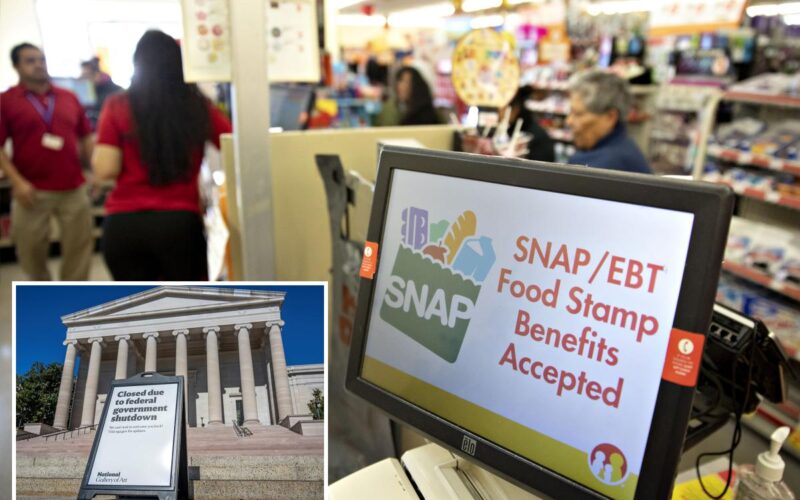SNAP recipients in several states are being warned they won’t get their food stamps starting next week if the federal government shutdown drags on.
New York, New Jersey, Pennsylvania, Maryland, Texas, Illinois and California are among the states that issued the warnings.
“The Trump administration has indicated to New York that it will not allow states to distribute federal funding for SNAP recipients,” New York Gov. Kathy Hochul said in a statement.
Nearly 3 million New Yorkers who rely on SNAP “could lose access to their benefits starting Nov. 1,” according to her office.
New Jersey officials were “notified by the federal government that if the shutdown continues, November 2025 SNAP benefits may not be available on time,” according to the state’s Department of Human Services.
“It is unclear if SNAP benefits loaded on your Families First EBT card prior to October 31, 2025 will be able o be used after November 1, 2025.”
The shutdown became the second longest in history on Wednesday as it entered its 22nd day.
More than 5 million people in California and nearly 2 million residents of Illinois could be cut off from food stamps beginning Nov. 1, according to officials in both states.
“Our food pantries are going to be overwhelmed with SNAP participants who rely on that critical lifeline for support and for basic food assitance,” Man-Yee Lee of the Greater Chicago Food Depository told CBS News.
SNAP, or the Supplemental Nutrition Assistance Program, is a federal government program that provides monthly assistance to low-income individuals and families. Known colloquially as food stamps, the benefits typically come in card form that can be used like cash for approved products such as fruits, vegetables, meat, dairy, bread and cereals..
The program, which is funded by the US Department of Agriculture and administered primarily by state governments, serves around 42 million people nationwide — or 12.3% of the US population.
In 2000, just 6.1% of the US population received SNAP benefits.
In fiscal year 2024, New Mexico had the highest share of its population receiving SNAP payments — 21.2%. Utah has the lowest in the nation — just 4.8%.
In New York State, 14.7% of the population receives SNAP payments.
The Post has sought comment from the White House.
“Due to the Radical Left Democrat shutdown, this government website will not be updated during the funding lapse,” the US Department of Agriculture’s website read on Wednesday.
“President Trump has made it clear he wants to keep the government open and support those who feed, fuel, and clothe the American people.”
SNAP is tightly linked to farm subsidies — both of which are core parts of the federal Farm Bill, which Congress reauthorizes roughly every five years to set food and agriculture policy.
The bill combines funding for nutrition programs and farm supports, meaning legislative or budget changes to one often influence negotiations over the other.








